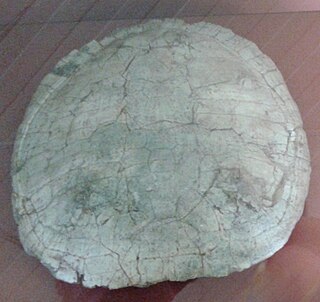Related Research Articles

Caenorhabditis elegans is a free-living transparent nematode about 1 mm in length that lives in temperate soil environments. It is the type species of its genus. The name is a blend of the Greek caeno- (recent), rhabditis (rod-like) and Latin elegans (elegant). In 1900, Maupas initially named it Rhabditides elegans. Osche placed it in the subgenus Caenorhabditis in 1952, and in 1955, Dougherty raised Caenorhabditis to the status of genus.

Howard Robert Horvitz is an American biologist best known for his research on the nematode worm Caenorhabditis elegans, for which he was awarded the 2002 Nobel Prize in Physiology or Medicine, together with Sydney Brenner and John E. Sulston, whose "seminal discoveries concerning the genetic regulation of organ development and programmed cell death" were "important for medical research and have shed new light on the pathogenesis of many diseases".

Sir John Edward Sulston was a British biologist and academic who won the Nobel Prize in Physiology or Medicine for his work on the cell lineage and genome of the worm Caenorhabditis elegans in 2002 with his colleagues Sydney Brenner and Robert Horvitz. He was a leader in human genome research and Chair of the Institute for Science, Ethics and Innovation at the University of Manchester. Sulston was in favour of science in the public interest, such as free public access of scientific information and against the patenting of genes and the privatisation of genetic technologies.

The spermatheca, also called receptaculum seminis, is an organ of the female reproductive tract in insects, e.g. ants, bees, some molluscs, oligochaeta worms and certain other invertebrates and vertebrates. Its purpose is to receive and store sperm from the male or, in the case of hermaphrodites, the male component of the body. Spermathecae can sometimes be the site of fertilization when the oocytes are sufficiently developed.

Rosellas are in a genus that consists of six species and nineteen subspecies. These colourful parrots from Australia are in the genus Platycercus. Platycercus means "broad-tailed" or "flat-tailed", reflecting a feature common to the rosellas and other members of the broad-tailed parrot tribe. Their diet is mainly seeds and fruit.

Banksia elegans, commonly known as the elegant banksia, is a species of woody shrub that is endemic to a relatively small area of Western Australia. Reaching 4 m (13 ft) high, it is a suckering shrub that rarely reproduces by seed. The round to oval yellow flower spikes appear in spring and summer. Swiss botanist Carl Meissner described Banksia elegans in 1856. It is most closely related to the three species in the subgenus Isostylis.

In molecular biology lin-4 is a microRNA (miRNA) that was identified from a study of developmental timing in the nematode Caenorhabditis elegans. It was the first to be discovered of the miRNAs, a class of non-coding RNAs involved in gene regulation. miRNAs are transcribed as ~70 nucleotide precursors and subsequently processed by the Dicer enzyme to give a 21 nucleotide product. The extents of the hairpin precursors are not generally known and are estimated based on hairpin prediction. The products are thought to have regulatory roles through complete or partial complementarity to mRNA. The lin-4 gene has been found to lie within a 4.11kb intron of a separate host gene.

The Wyoming ground squirrel is a species of rodent in the family Sciuridae.

The elegant water shrew is a species of mammal in the subfamily Soricinae of the family Soricidae. It is monotypic within the genus Nectogale. It lives in Sikkim and China.

Eudromia is a genus of birds in the tinamou family. This genus comprises two crested members of this South American family.

The western terrestrial garter snake is a western North American species of colubrid snake. At least five subspecies are currently recognized.
Platycraniellus is an extinct genus of non-mammalian cynodonts. It is known from the Early Triassic Lystrosaurus Assemblage Zone of the Normandien Formation of South Africa. The type and only species is P. elegans.
Trechus compsus is a species of ground beetle in the subfamily Trechinae. It was described by Jeannel in 1935.
C. elegans most commonly refers to the model round worm Caenorhabditis elegans. It may also refer to any of the species below. They are listed, first in taxonomic order and, second, alphabetically.

Compsus is a genus of broad-nosed weevils in the family Curculionidae, distributed across the Americas, primarily in northern South America.

Bauruemys is an extinct genus of turtles in the family Podocnemididae.

Oxyderces is a genus of broad-nosed weevils in the family Curculionidae distributed in South America. It can be recognized by the presence of dense setae on the apex of the rostrum and postocular setae.

Oxyderces viridipes is a species of broad-nosed weevils in the family Curculionidae. This species is endemic to Colombia, commonly found in Medellín and surrounding areas, but has been incidentally collected in the United States.

Compsus canescens is a species of broad-nosed weevils in the family Curculionidae. This species is endemic to Colombia, commonly found in Bogotá and surrounding areas.
References
- ↑ Coleopterorum catalogus: Curculionidae. C Lona - 1938